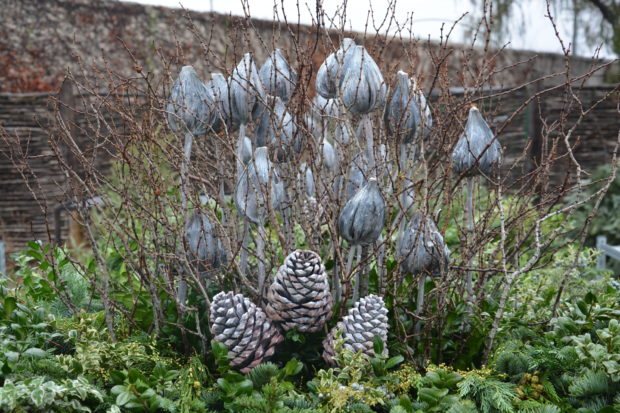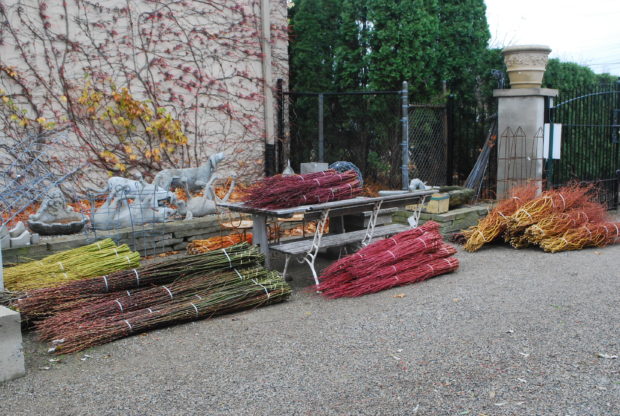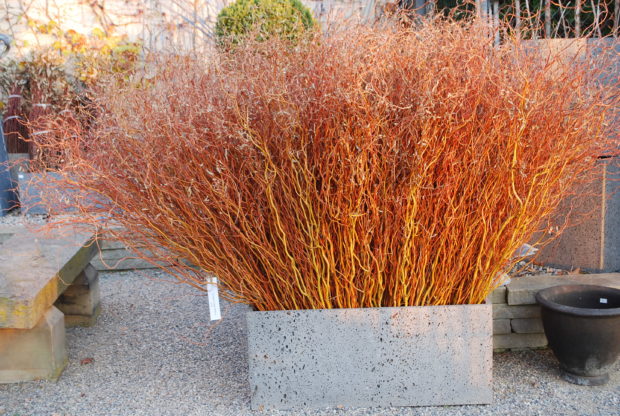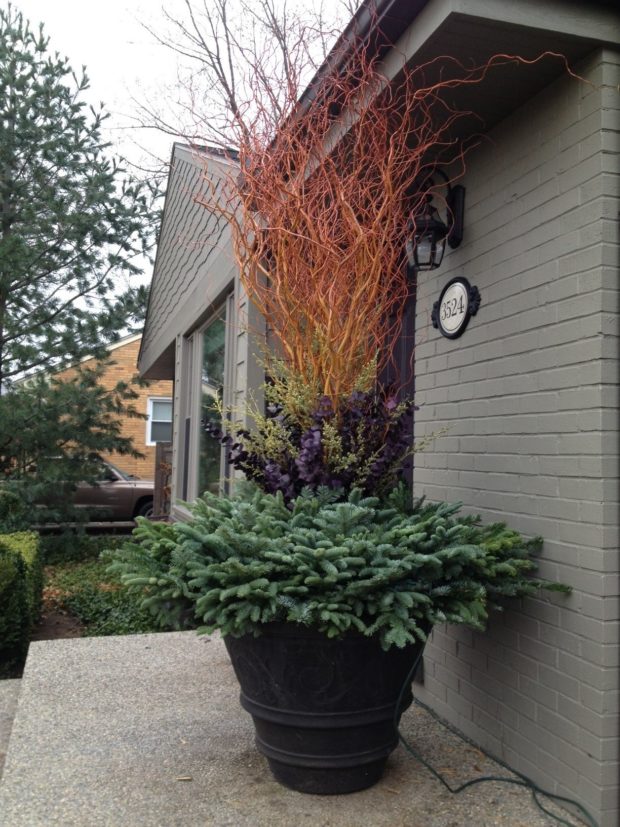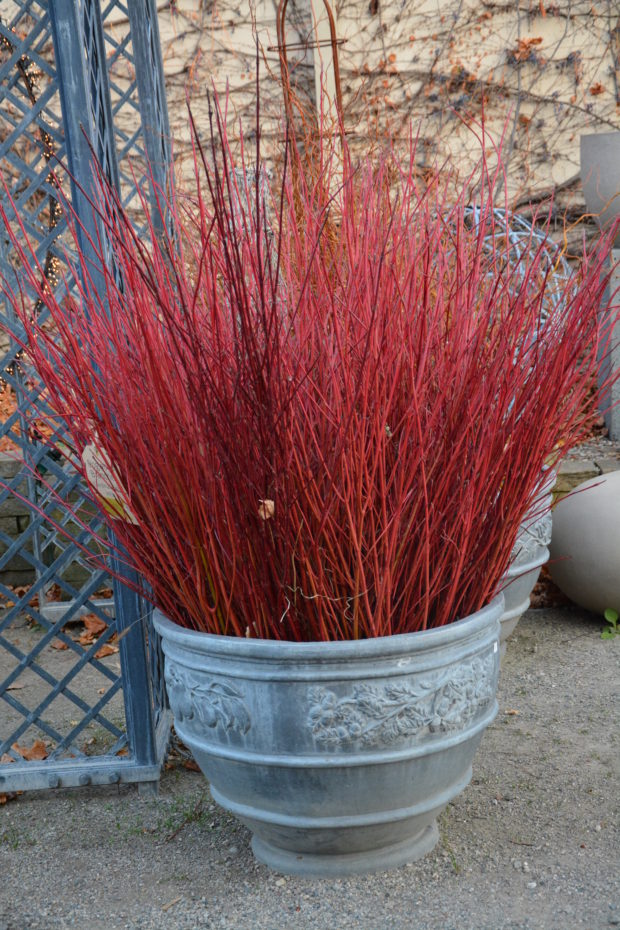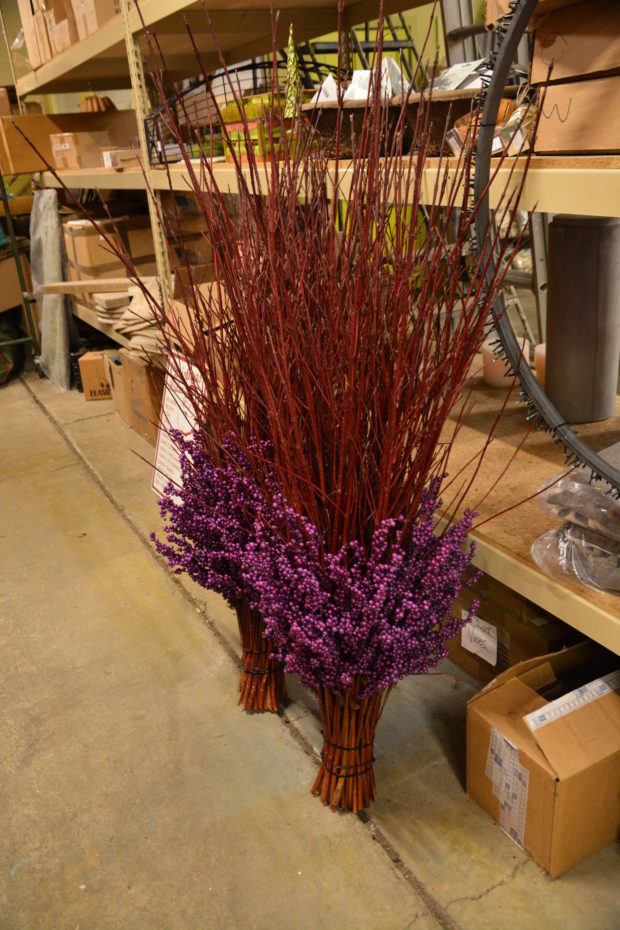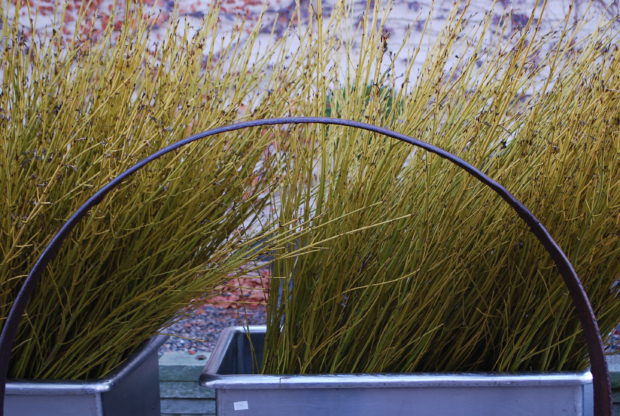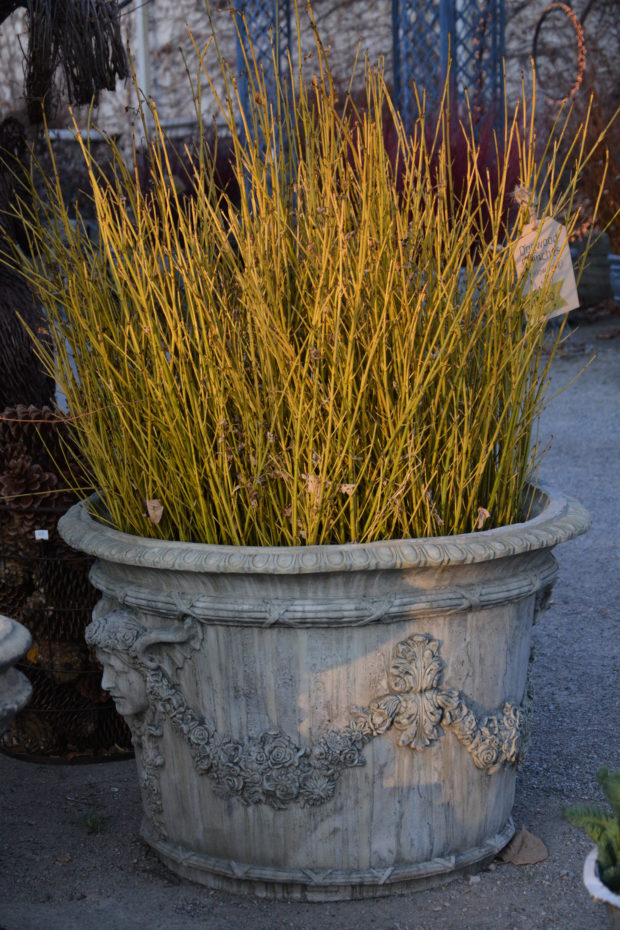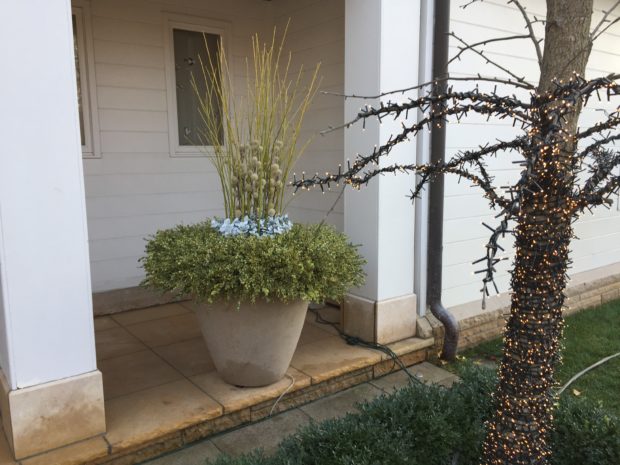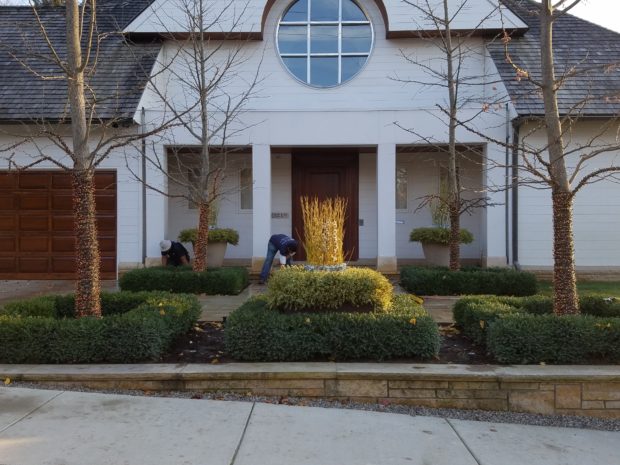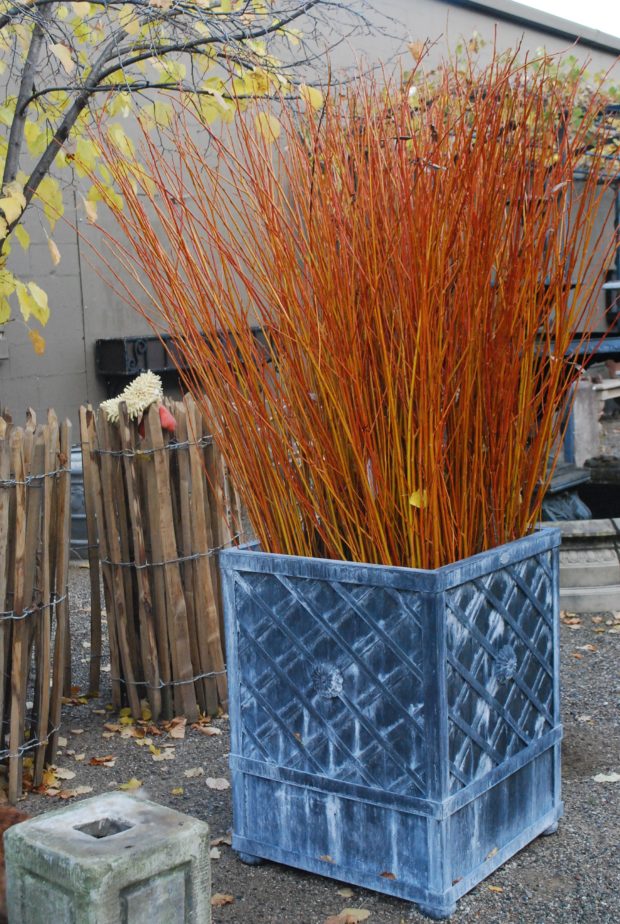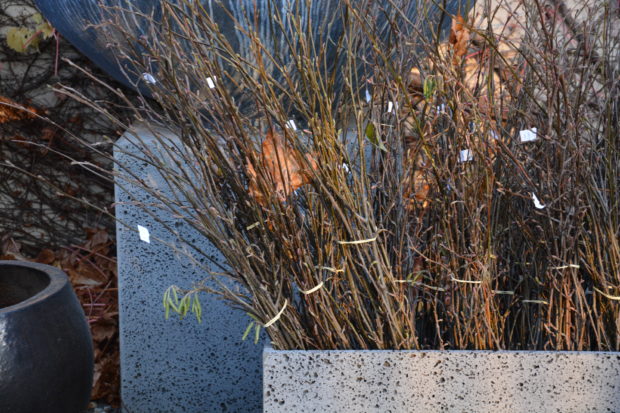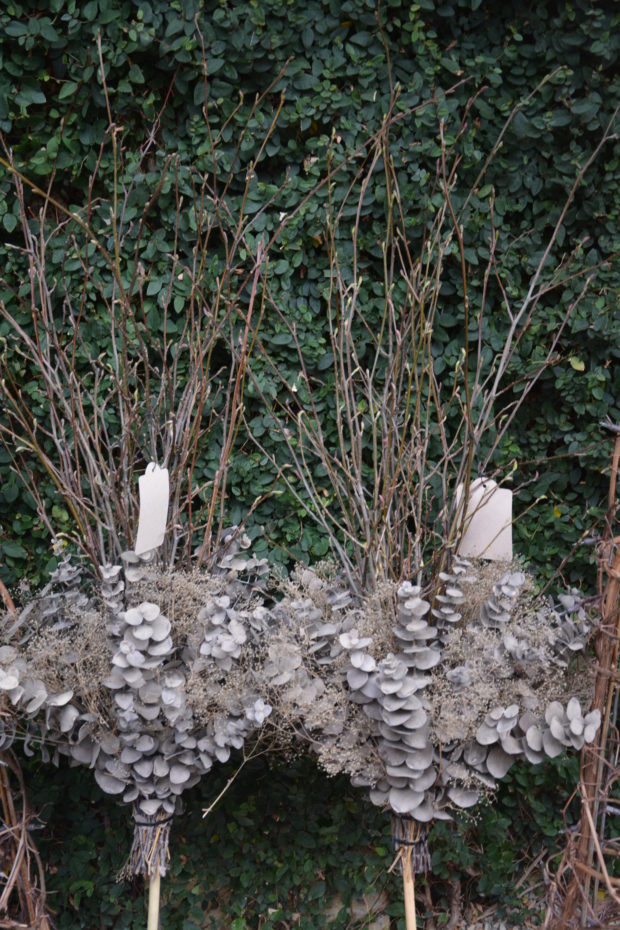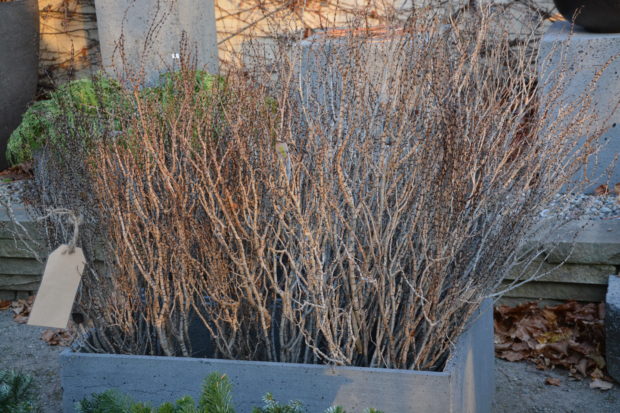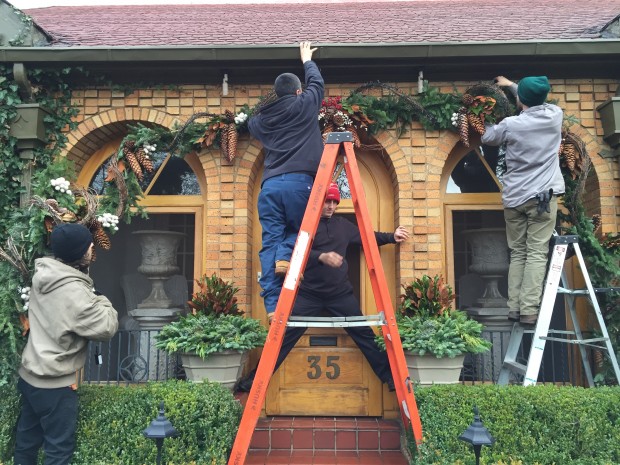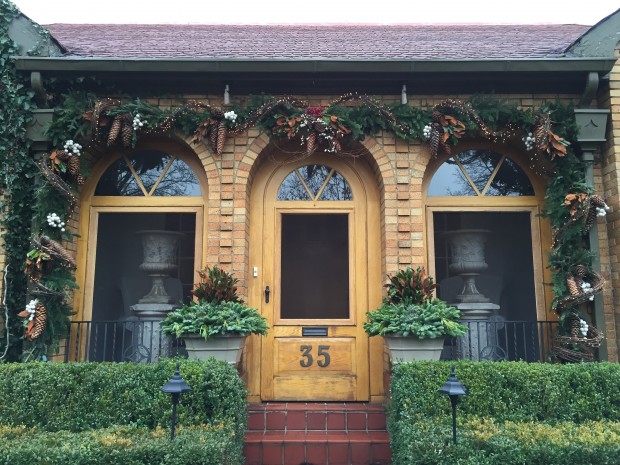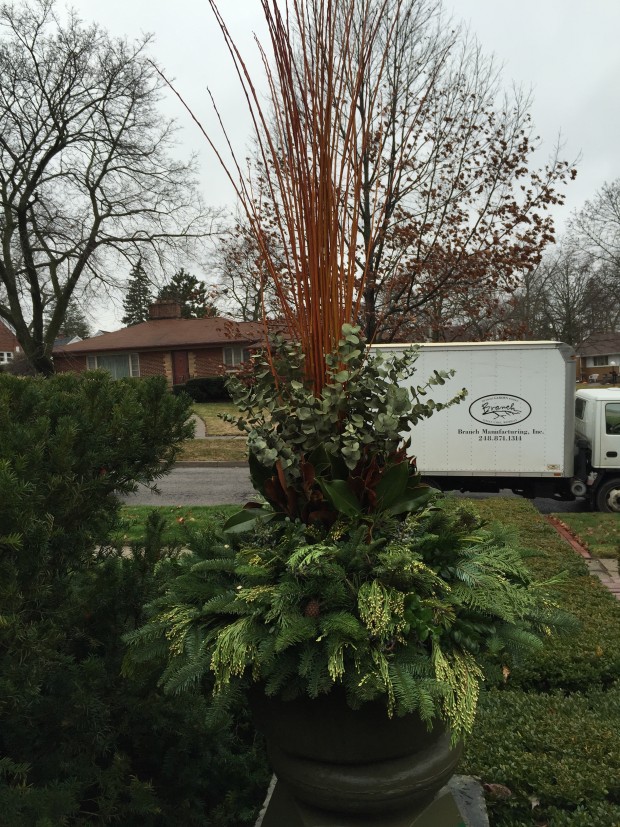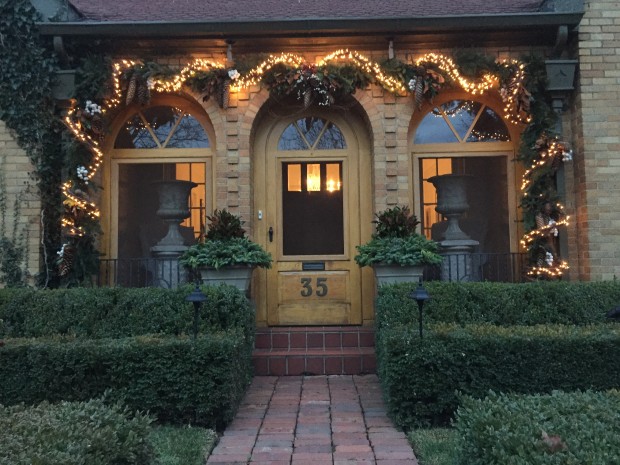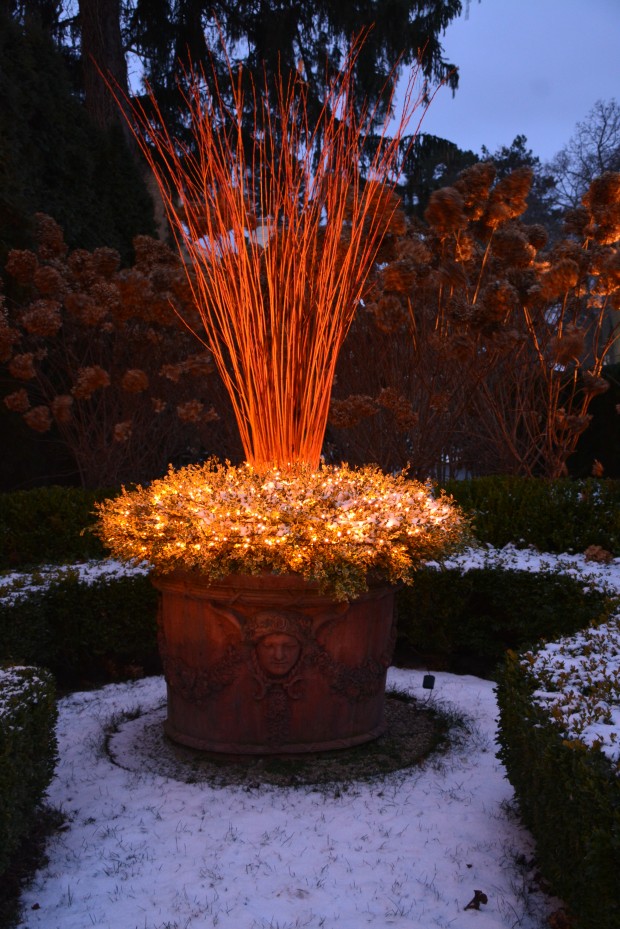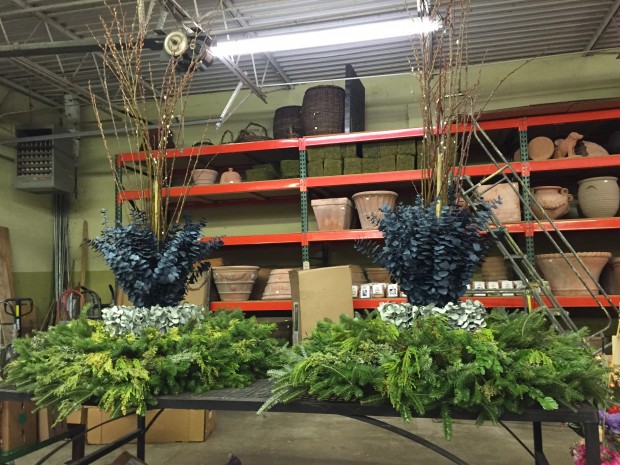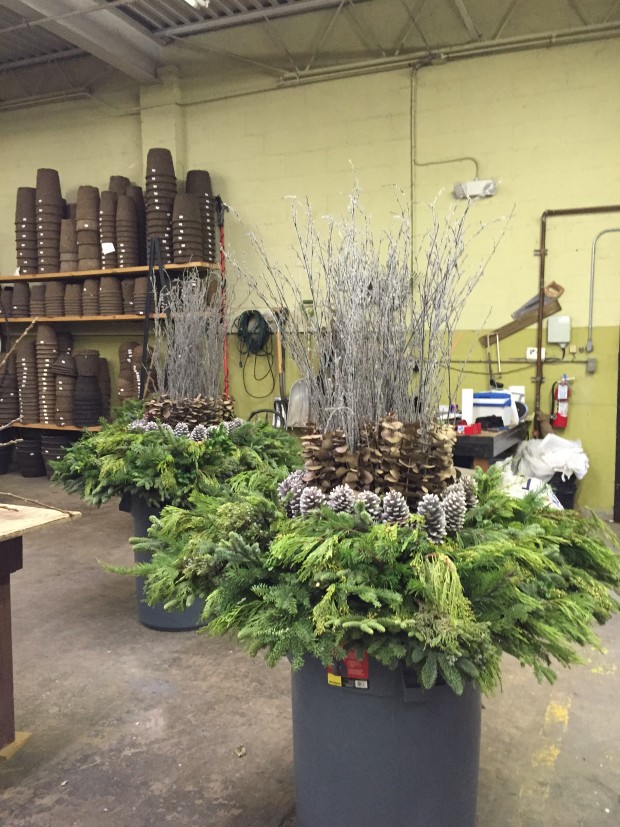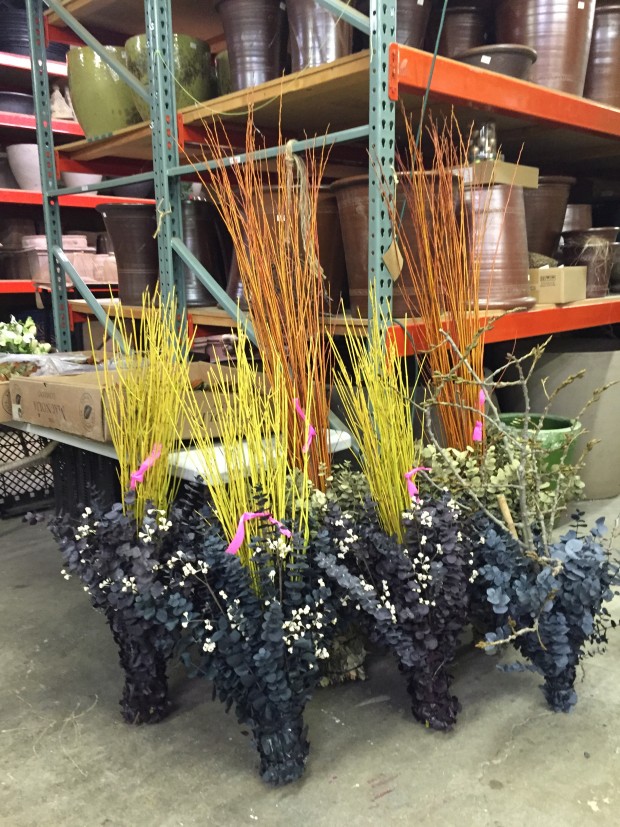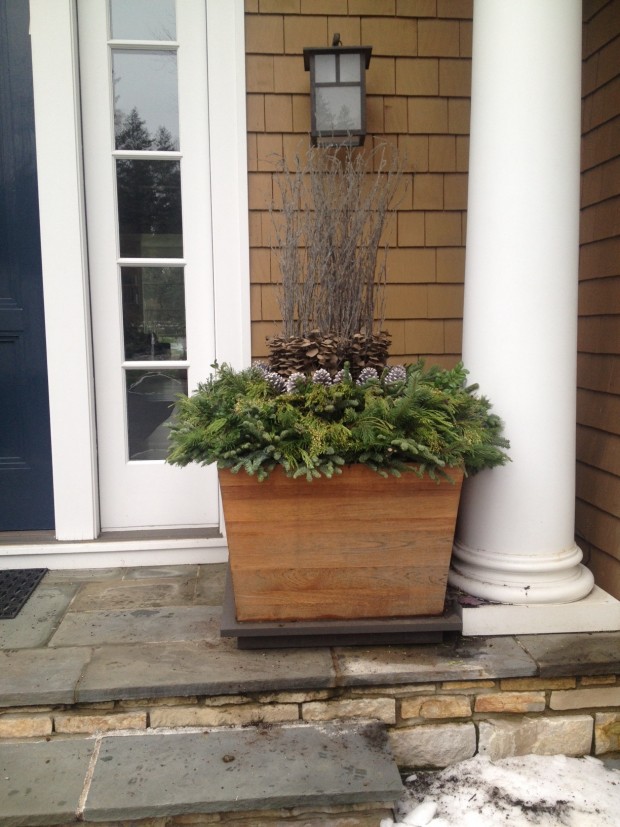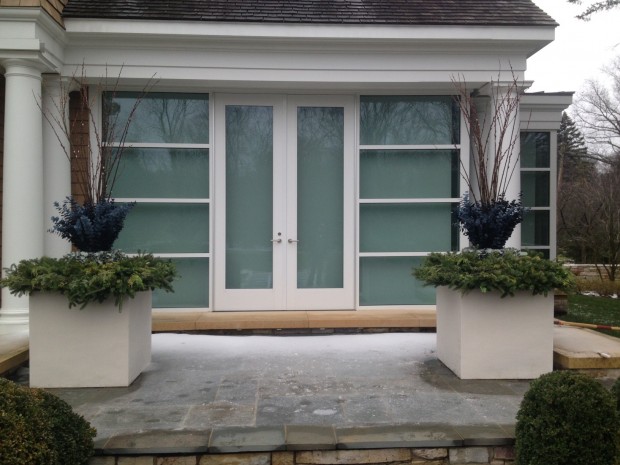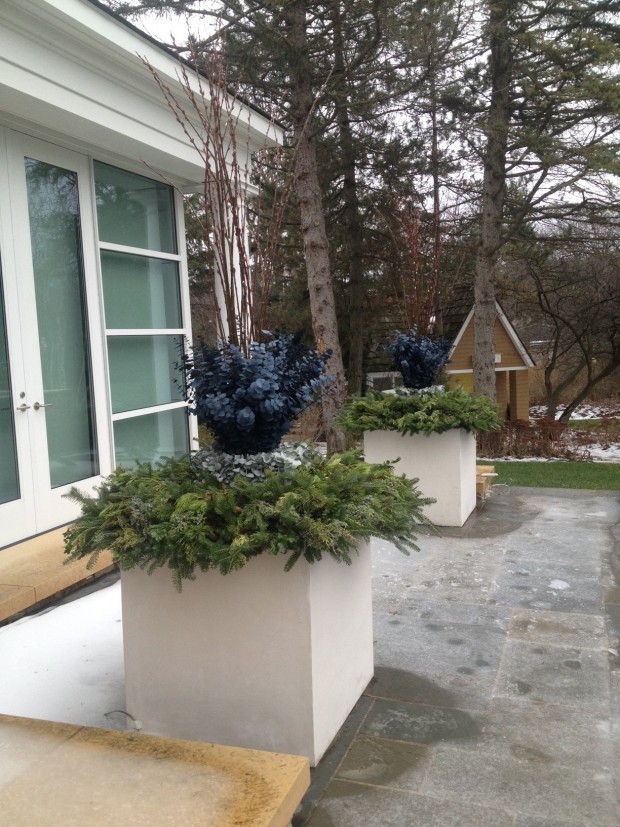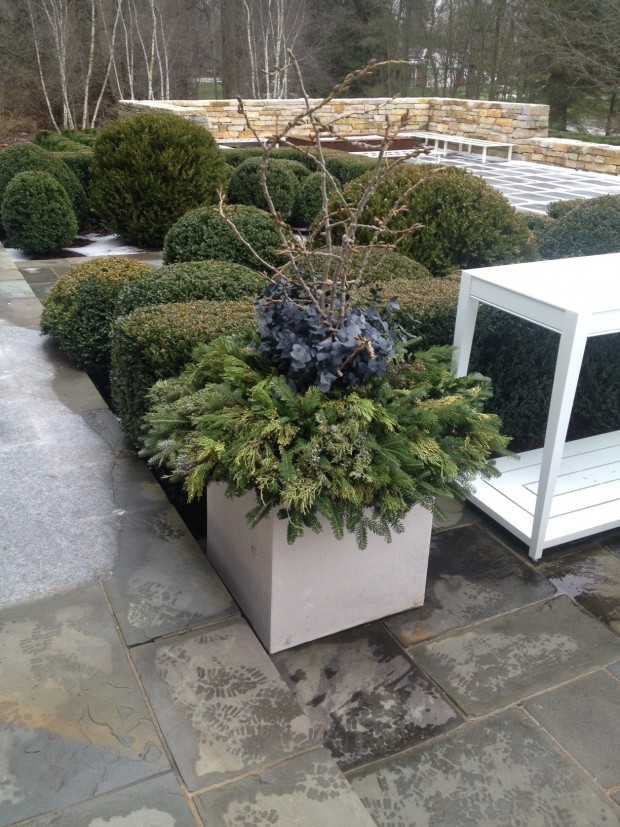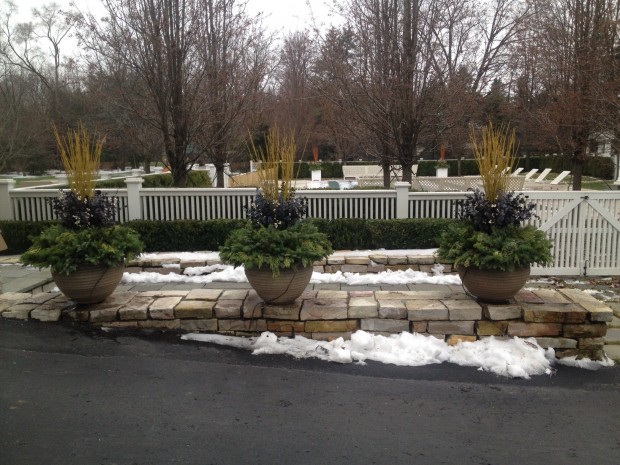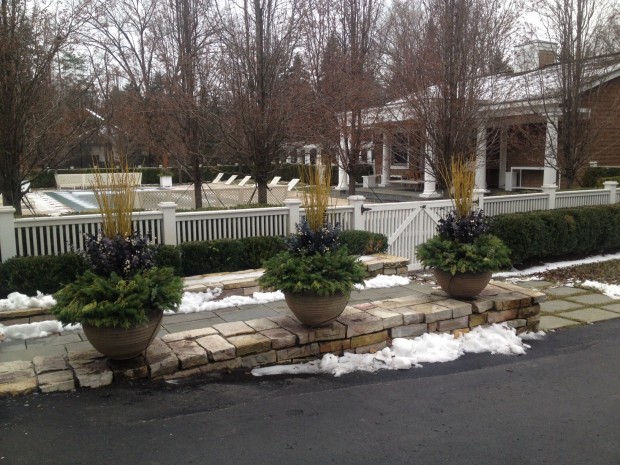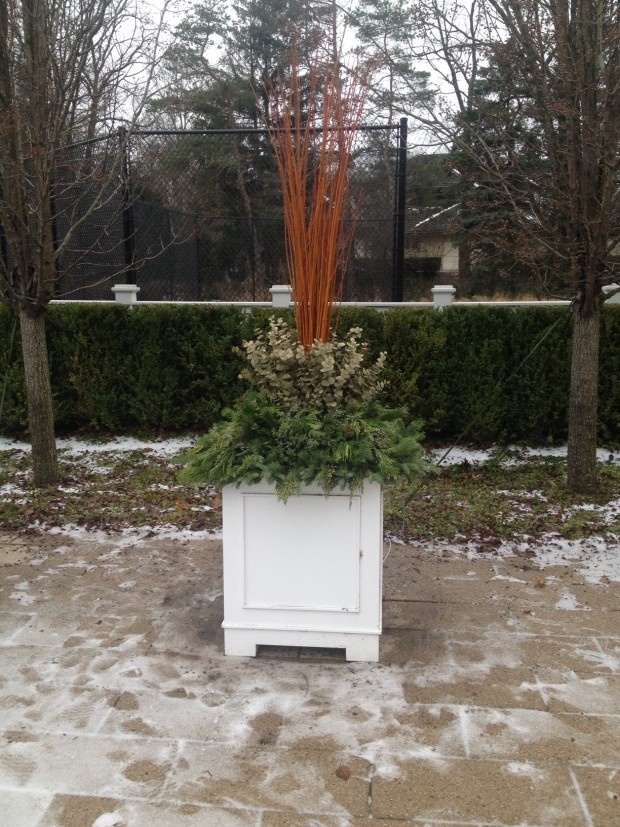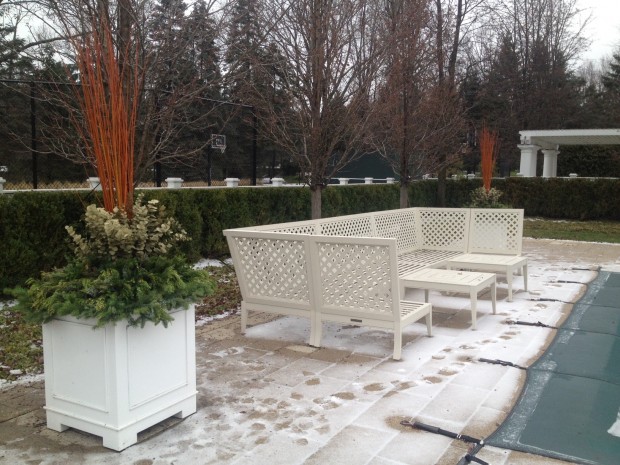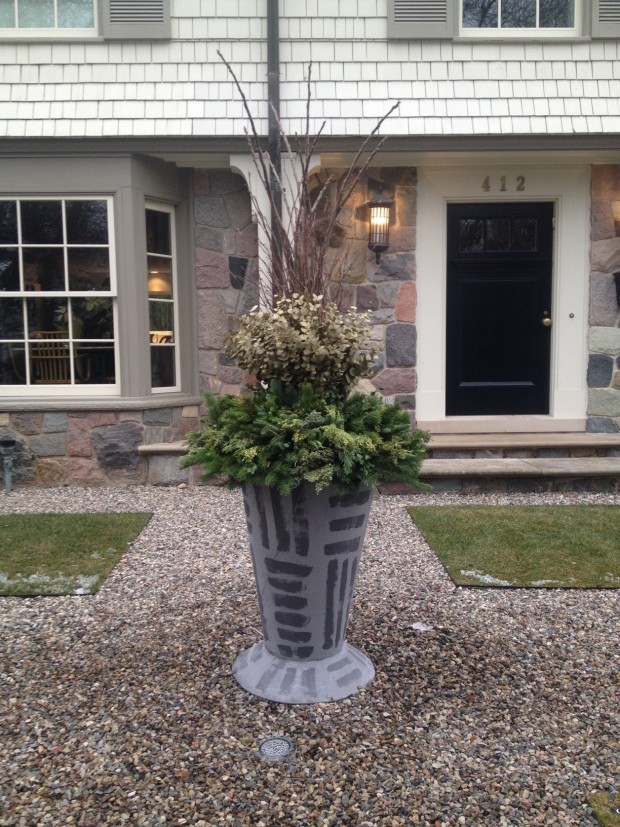 We are in the thick of the winter container gardening season. The shop sees to stocking and restocking great materials, which means that the landscape company has a shop full of cut greens, berries and picks in addition to fresh cut branches from which to choose. Those clients who choose to have us dress their holiday and winter pots keep my crews busy until the end of the year. I am grateful for that, and for the opportunity to do the work. If you are a gardener who chooses to do your own, I have a few suggestions. If you use any cut broad leaved evergreens in your containers, like the variegated boxwood pictured above, consider spraying them with an antidessicant after you have arranged them. Their broad and thin leaves will lose water quickly after they are cut. An antidessicant will help to slow the drying process. Fresh cut twigs stay fresh looking a long time without any additional help, as the bark keeps the moisture within the stem.
We are in the thick of the winter container gardening season. The shop sees to stocking and restocking great materials, which means that the landscape company has a shop full of cut greens, berries and picks in addition to fresh cut branches from which to choose. Those clients who choose to have us dress their holiday and winter pots keep my crews busy until the end of the year. I am grateful for that, and for the opportunity to do the work. If you are a gardener who chooses to do your own, I have a few suggestions. If you use any cut broad leaved evergreens in your containers, like the variegated boxwood pictured above, consider spraying them with an antidessicant after you have arranged them. Their broad and thin leaves will lose water quickly after they are cut. An antidessicant will help to slow the drying process. Fresh cut twigs stay fresh looking a long time without any additional help, as the bark keeps the moisture within the stem.
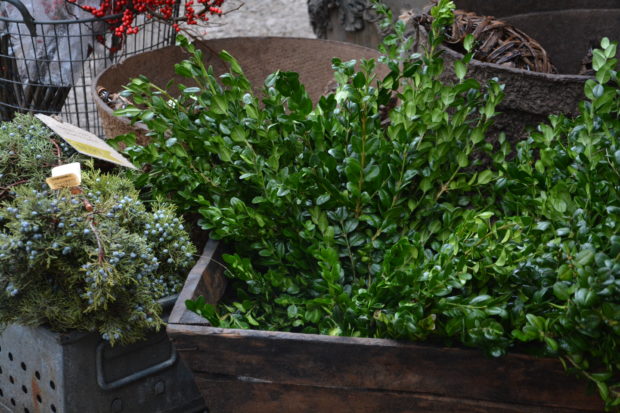 We spray our cut branches of boxwood with Vapor Gard, which is a non toxic natural pine resin based wax that coats and seals the leaves. This prevents or slows the evaporation of the moisture inside the leaves that are no longer absorbing water from the roots of the plant. An antidessicant will help to prevent winter burn on broad leaved evergreen plants as well. Newly planted boxwood, or boxwood planted in an exposed location will benefit from an antidessicant spray. The label will tell you what plants will benefit from this treatment. Vapor Gard is a commercial grade antidessicant only available by the gallon, but Wilt-Pruf is available ready mixed in a spray bottle, a more appropriate size for the greens in a few pots. Spray the greens on a rain free day at the warmest moment of the day. When I say spray, I really mean soak.
We spray our cut branches of boxwood with Vapor Gard, which is a non toxic natural pine resin based wax that coats and seals the leaves. This prevents or slows the evaporation of the moisture inside the leaves that are no longer absorbing water from the roots of the plant. An antidessicant will help to prevent winter burn on broad leaved evergreen plants as well. Newly planted boxwood, or boxwood planted in an exposed location will benefit from an antidessicant spray. The label will tell you what plants will benefit from this treatment. Vapor Gard is a commercial grade antidessicant only available by the gallon, but Wilt-Pruf is available ready mixed in a spray bottle, a more appropriate size for the greens in a few pots. Spray the greens on a rain free day at the warmest moment of the day. When I say spray, I really mean soak.
 Mountain hemlock does not need any antidessicant spray. The cut branches are always in short supply. These trees grow at extremely high altitudes, and if snow comes early in the mountains, the harvest will be small. We stock as much as we can of this cut evergreen, as it will stay obligingly green the entire winter. Evergreens have needle like foliage for a reason. Each needle has a very small surface area, which means the rate of transpiration is correspondingly small. Evergreens continue to photosynthesize, even though the roots cannot absorb water from the frozen ground in the winter. This is why it is so important that evergreens be well watered prior to the ground freezing. Evergreen foliage structure has evolved to keep moisture loss during the dormant season to a minimum. This mountain hemlock is Michigan winter proof. These cut stems will look as good next March as they do now.
Mountain hemlock does not need any antidessicant spray. The cut branches are always in short supply. These trees grow at extremely high altitudes, and if snow comes early in the mountains, the harvest will be small. We stock as much as we can of this cut evergreen, as it will stay obligingly green the entire winter. Evergreens have needle like foliage for a reason. Each needle has a very small surface area, which means the rate of transpiration is correspondingly small. Evergreens continue to photosynthesize, even though the roots cannot absorb water from the frozen ground in the winter. This is why it is so important that evergreens be well watered prior to the ground freezing. Evergreen foliage structure has evolved to keep moisture loss during the dormant season to a minimum. This mountain hemlock is Michigan winter proof. These cut stems will look as good next March as they do now.
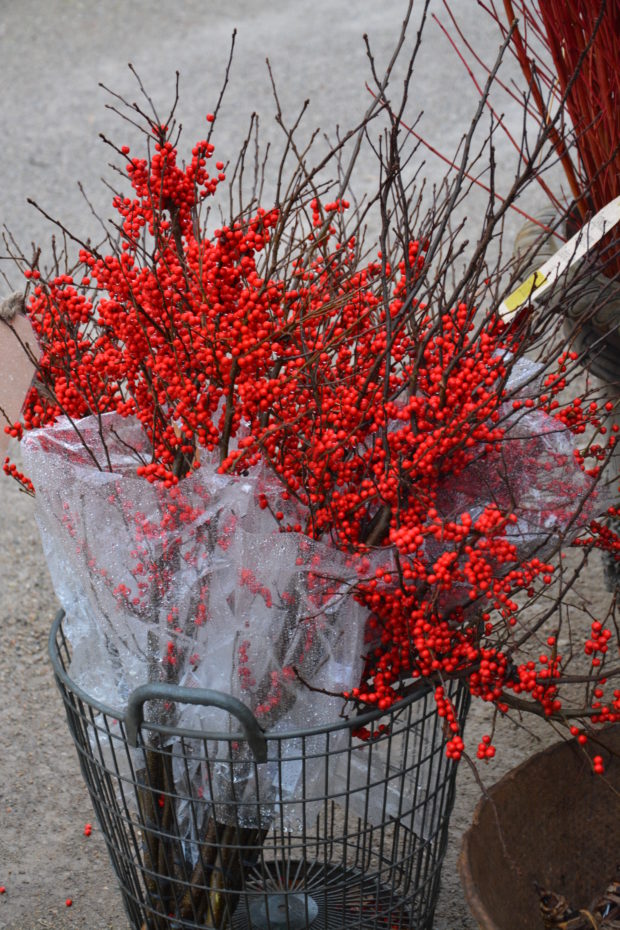 The berried stems of ilex verticillata are a favorite at the holidays. That vibrant red has yet to be matched by any artificial stem. However, cut ilex stems tend to shed berries at an alarming rate. An antidessicant will greatly slow that shedding. The winter berry stems that I soak with Vapor Gard insure that those berries hold on for a good portion of the winter. We spray all of the branches that come in to the shop with Vapor Gard.
The berried stems of ilex verticillata are a favorite at the holidays. That vibrant red has yet to be matched by any artificial stem. However, cut ilex stems tend to shed berries at an alarming rate. An antidessicant will greatly slow that shedding. The winter berry stems that I soak with Vapor Gard insure that those berries hold on for a good portion of the winter. We spray all of the branches that come in to the shop with Vapor Gard.
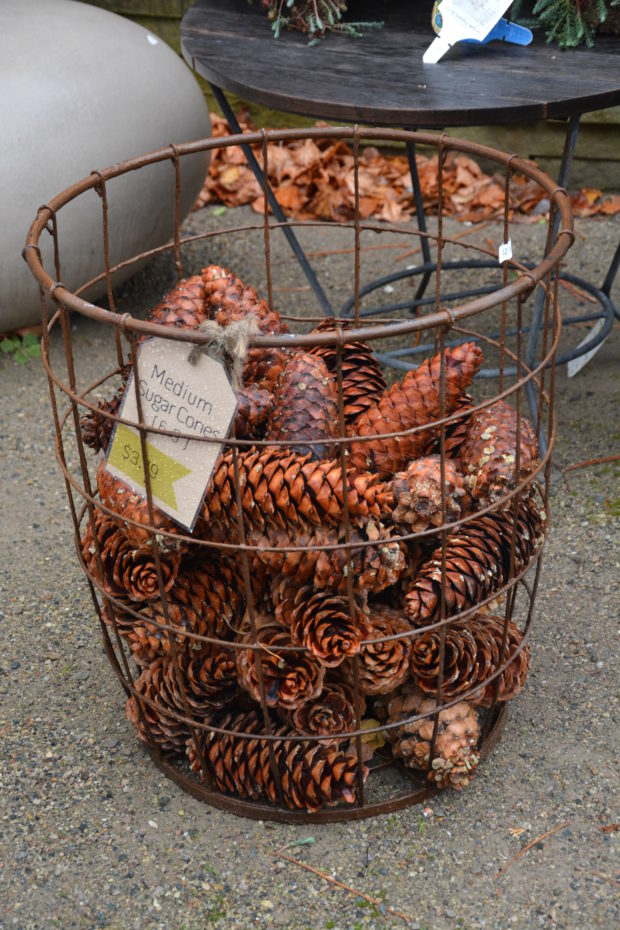 These sugar cones are not native to trees in my zone, but they naturally express the season. We group them on winter garlands, and stuff them into the greens of winter pots. The big scale, obvious texture and durable quality make them a candidate for inclusion in winter containers. Pine cones are tough as nails. Their scales are as woody as a tree branch.
These sugar cones are not native to trees in my zone, but they naturally express the season. We group them on winter garlands, and stuff them into the greens of winter pots. The big scale, obvious texture and durable quality make them a candidate for inclusion in winter containers. Pine cones are tough as nails. Their scales are as woody as a tree branch.
 We have a variety of pine cones and stemmed seed pods dusted with white wash. I like this frosty look. A pairing with with tiger branches is a monochromatic color scheme that is quite wintry.
We have a variety of pine cones and stemmed seed pods dusted with white wash. I like this frosty look. A pairing with with tiger branches is a monochromatic color scheme that is quite wintry.
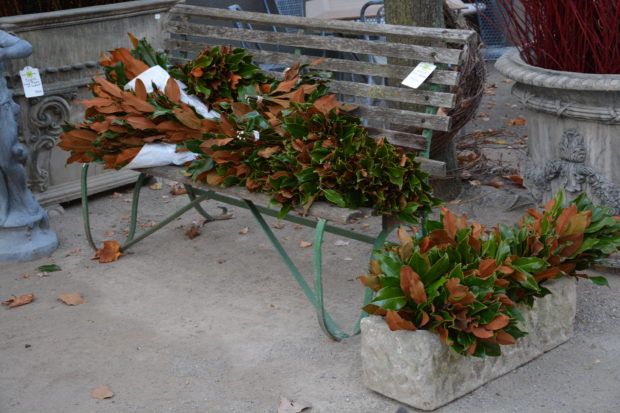 Fresh cut bunches of southern magnolia provide big leaves – green on the upper surface, and fuzzy brown on the obverse. The leaves curl beautifully as they dry, and will stick tight to the stem the entire winter. Our supplier is known for her heavily branched bunches that are like bouquets.
Fresh cut bunches of southern magnolia provide big leaves – green on the upper surface, and fuzzy brown on the obverse. The leaves curl beautifully as they dry, and will stick tight to the stem the entire winter. Our supplier is known for her heavily branched bunches that are like bouquets.
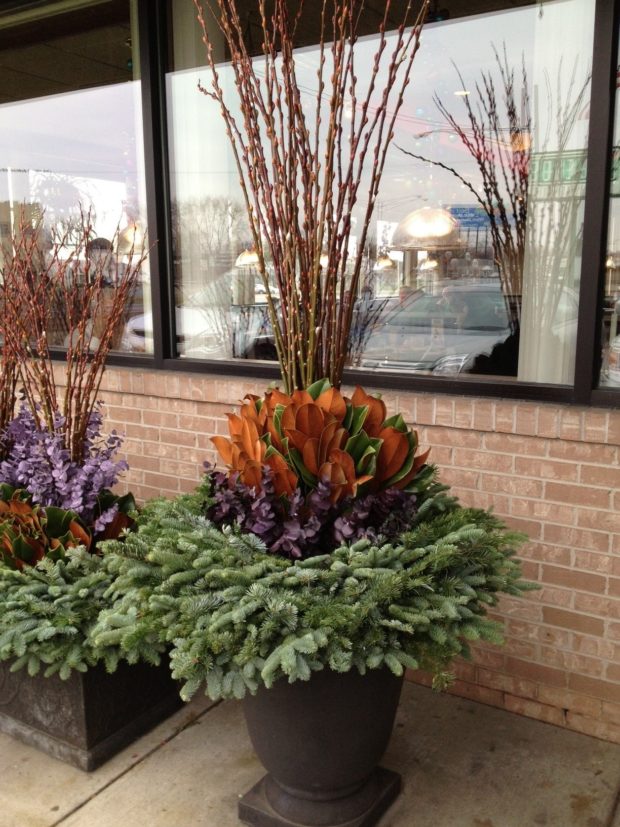 This winter installation from last year is all about the layering of materials. The effect is warm and inviting.
This winter installation from last year is all about the layering of materials. The effect is warm and inviting.
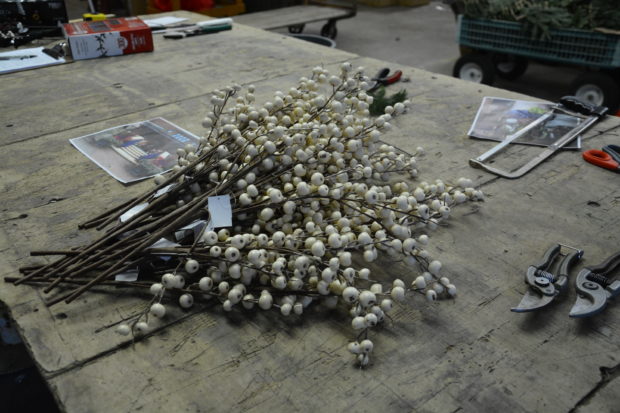 Plastic is not my first choice for a winter container, but plastic berry picks are entirely waterproof and winter proof. They can be reused for a number of seasons. Some of ours have stems that are wrapped in brown paper which is then waxed. They may not seem so appealing in their raw state, but placed in a container full of natural materials, they are quite believable.
Plastic is not my first choice for a winter container, but plastic berry picks are entirely waterproof and winter proof. They can be reused for a number of seasons. Some of ours have stems that are wrapped in brown paper which is then waxed. They may not seem so appealing in their raw state, but placed in a container full of natural materials, they are quite believable.
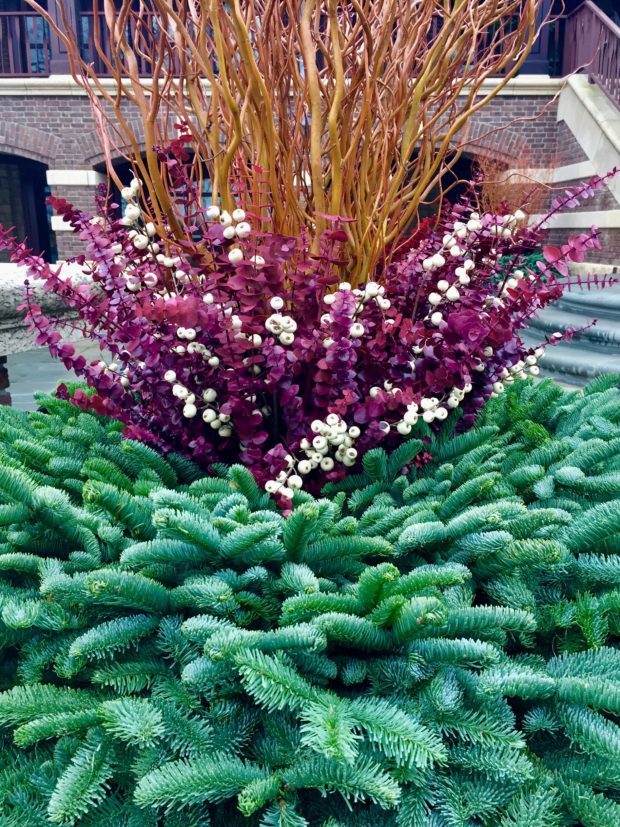 white plastic berries and plum eucalyptus
white plastic berries and plum eucalyptus
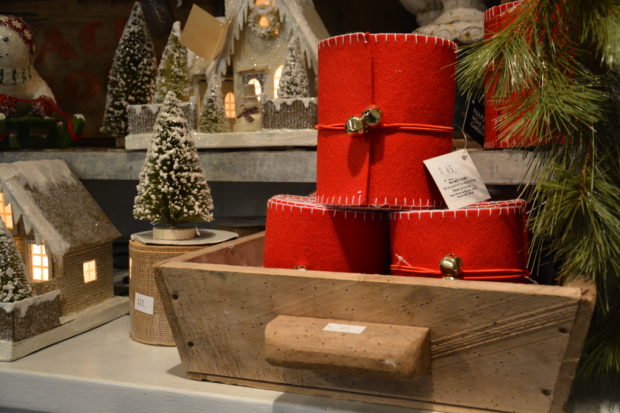 This red felt ribbon finished with a white hemstitch is handsome. The oversized width makes it great for holiday decorating. Would I be concerned about using it outside? No. Most materials do not mind cold or snow. But some materials are not happy subjected to late fall rains. Ask or test before you put a material outdoors for the winter.
This red felt ribbon finished with a white hemstitch is handsome. The oversized width makes it great for holiday decorating. Would I be concerned about using it outside? No. Most materials do not mind cold or snow. But some materials are not happy subjected to late fall rains. Ask or test before you put a material outdoors for the winter.
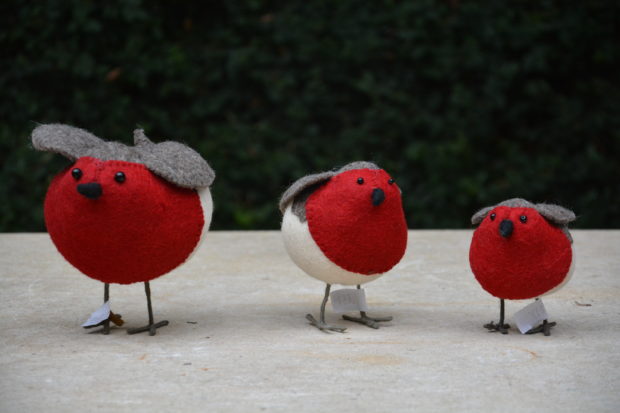 These felt birds would look great perched on a window sill all winter long.
These felt birds would look great perched on a window sill all winter long.
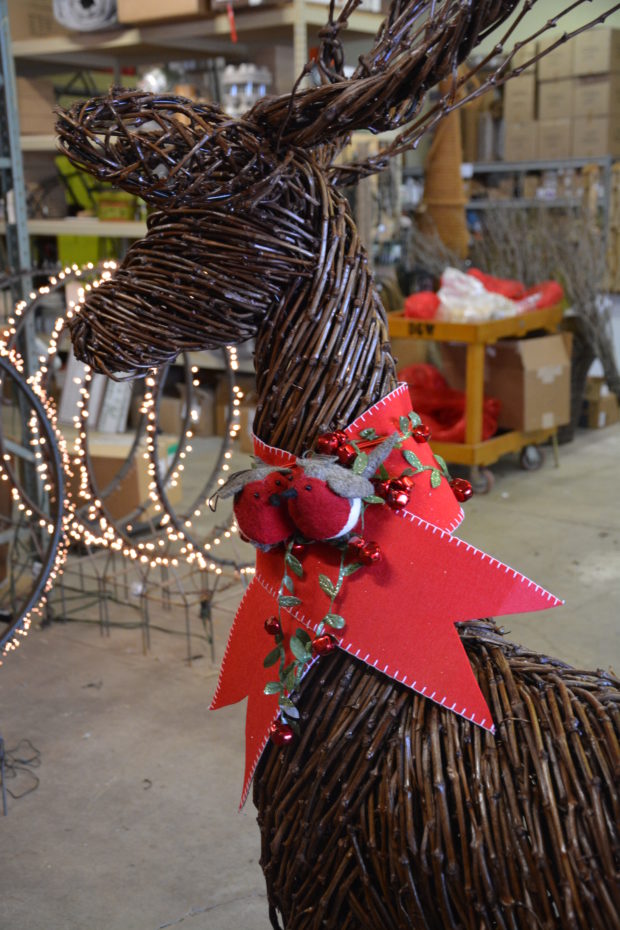 We have a client with an entire family of our grapevine deer. As they spend the winter outdoors, we seal them with Waterlox once a year. This helps to keep the grapevine from deteriorating. Every holiday, we make collars for them – this year is no exception. The idea here is that materials traditionally used indoors can be equally effective outdoors.
We have a client with an entire family of our grapevine deer. As they spend the winter outdoors, we seal them with Waterlox once a year. This helps to keep the grapevine from deteriorating. Every holiday, we make collars for them – this year is no exception. The idea here is that materials traditionally used indoors can be equally effective outdoors.
 This plain lighted artificial wreath got an upgrade from a 6′ pine cone garland, and some pods and berries.
This plain lighted artificial wreath got an upgrade from a 6′ pine cone garland, and some pods and berries.
 This sphere is encircled by greens, lights, pods, magnolia, and gold berry picks.
This sphere is encircled by greens, lights, pods, magnolia, and gold berry picks.
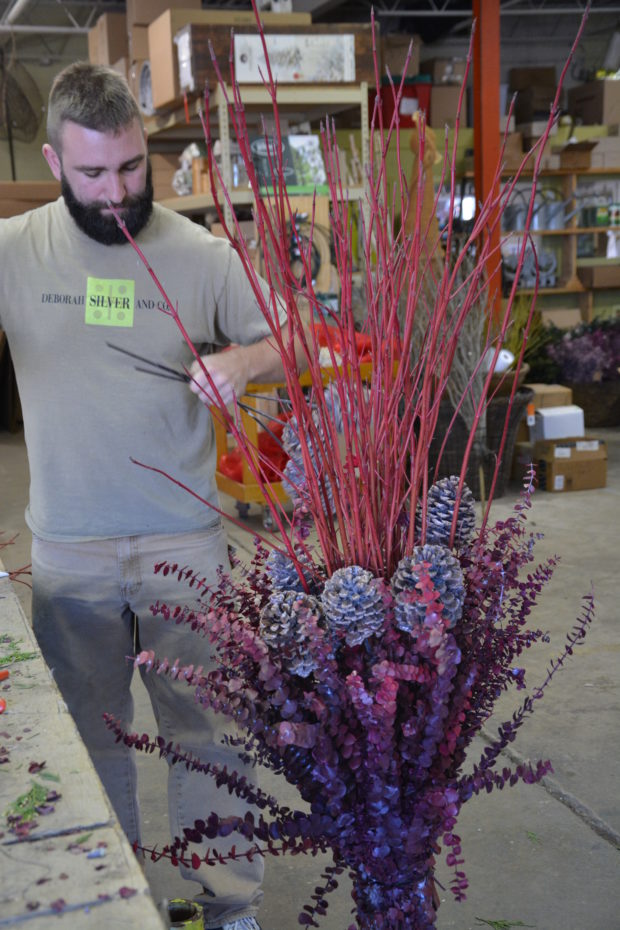 Today is a relaxing day, with time available to reflect. Tomorrow we will be back to the making. Happy Thanksgiving.
Today is a relaxing day, with time available to reflect. Tomorrow we will be back to the making. Happy Thanksgiving.
